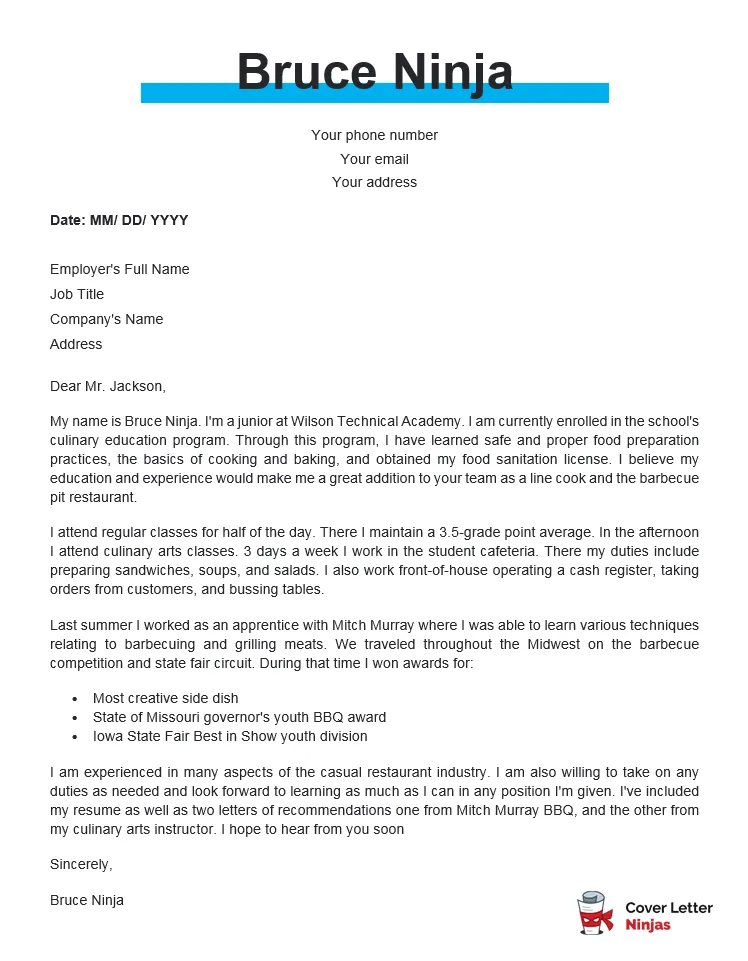What is a Cover Letter?
A cover letter is a crucial document that accompanies your resume when applying for jobs or internships. It serves as your first introduction to a potential employer, providing an opportunity to highlight your skills, experiences, and motivations in a personalized way. Unlike a resume, which is a concise summary of your qualifications, a cover letter allows you to elaborate on why you’re a great fit for a specific role and company. It provides context to your resume and helps you stand out from other applicants. Think of it as a sales pitch—you’re selling yourself to the employer, convincing them to read your resume and ultimately, to offer you an interview. A well-written cover letter demonstrates your communication skills and attention to detail, both of which are highly valued by employers.
Why Cover Letters Are Essential for Students
For students, cover letters are particularly important, as they often have limited work experience. A cover letter allows you to showcase transferable skills gained from academic projects, extracurricular activities, volunteer work, or part-time jobs. It’s your chance to demonstrate enthusiasm for the position and the company, which can be particularly effective when your professional experience is still developing. A well-crafted letter can help bridge the gap between your academic achievements and the requirements of the job. It provides an opportunity to explain why you’re interested in the role and what you hope to gain from it, which shows initiative and a proactive approach to your career. Moreover, it’s an opportunity to showcase your writing skills and attention to detail, qualities vital for any professional role.
The Importance of a Strong First Impression
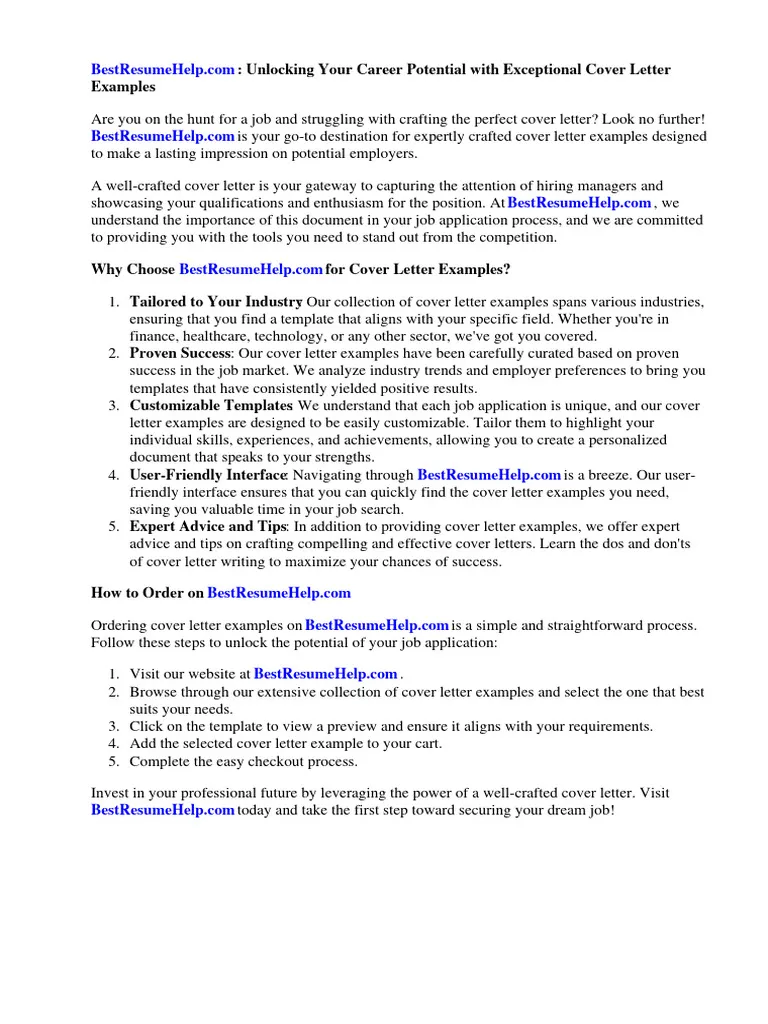
Your cover letter is often the first impression you make on a potential employer, and first impressions matter. It sets the tone for how the hiring manager will perceive your application. A strong cover letter can capture the reader’s attention and encourage them to delve deeper into your qualifications, starting with your resume. It should be carefully tailored to each job application, demonstrating that you’ve taken the time to understand the role and the company. It should also showcase your personality and communication skills, which helps you stand out from other candidates. A well-structured, error-free letter demonstrates professionalism and attention to detail, showing the employer that you are serious about the opportunity. Conversely, a poorly written cover letter can lead to immediate rejection, regardless of your qualifications.
Key Components of an Effective Cover Letter
An effective cover letter typically includes several key components. These elements work together to present a compelling argument for your candidacy. The structure and content should follow a standard format, including your contact information, the recipient’s contact information, a compelling opening, a detailed body highlighting your skills and experiences, a concluding paragraph, and a call to action. Each part plays a crucial role in conveying your qualifications and enthusiasm. Ensuring that all these elements are well-crafted and seamlessly integrated will significantly improve the effectiveness of your cover letter.
Your Contact Information and Date
Start by including your full name, address, phone number, and email address at the top left of the letter. Ensure your email address is professional. Include the date below your contact information. This allows the employer to easily reach you and provides a record of when the letter was sent. Make sure the date is current and accurately reflects when you are submitting your application. This section is crucial for straightforward communication and professionalism.
The Recipient’s Contact Information
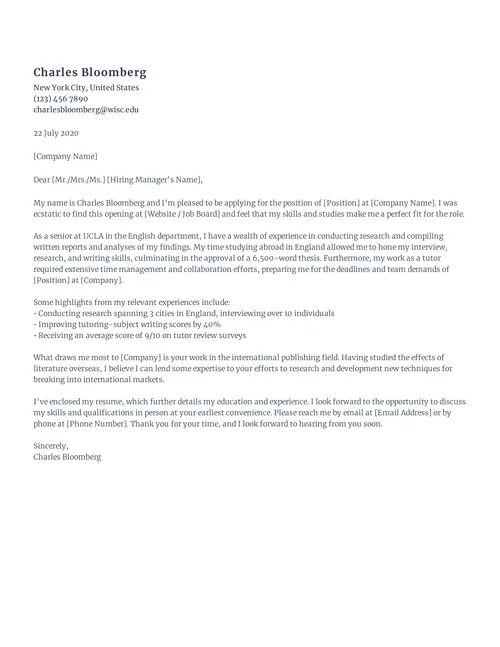
Below your contact information and the date, include the recipient’s details. Always try to find the hiring manager’s name; addressing the letter to a specific person adds a personal touch. If you can’t find a name, use a professional title like ‘Hiring Manager.’ Include the company name and address. This shows you’ve researched the company and are serious about the position. Getting the name and title right demonstrates your attention to detail, setting you apart from applicants who use generic greetings.
A Compelling Opening Statement
Your opening statement should grab the reader’s attention and make them want to read more. State the position you are applying for and where you found the job posting. Briefly explain why you are interested in the role and the company. Consider mentioning a specific achievement or skill that aligns with the job requirements. This introductory paragraph sets the tone and gives the employer a clear understanding of why you are applying. An effective opening shows enthusiasm and demonstrates your understanding of the job and the company.
Highlighting Your Skills and Experiences
The body of your cover letter is where you highlight your skills and experiences. The goal is to convince the employer you have the qualifications and personality to succeed in the role. This section should be customized to the specific job you are applying for. Use this section to explain how your skills and experiences relate to the job requirements. Provide specific examples to support your claims and showcase your achievements. This is where you link your qualifications to the company’s needs and demonstrate your value.
Tailoring Your Letter to the Job
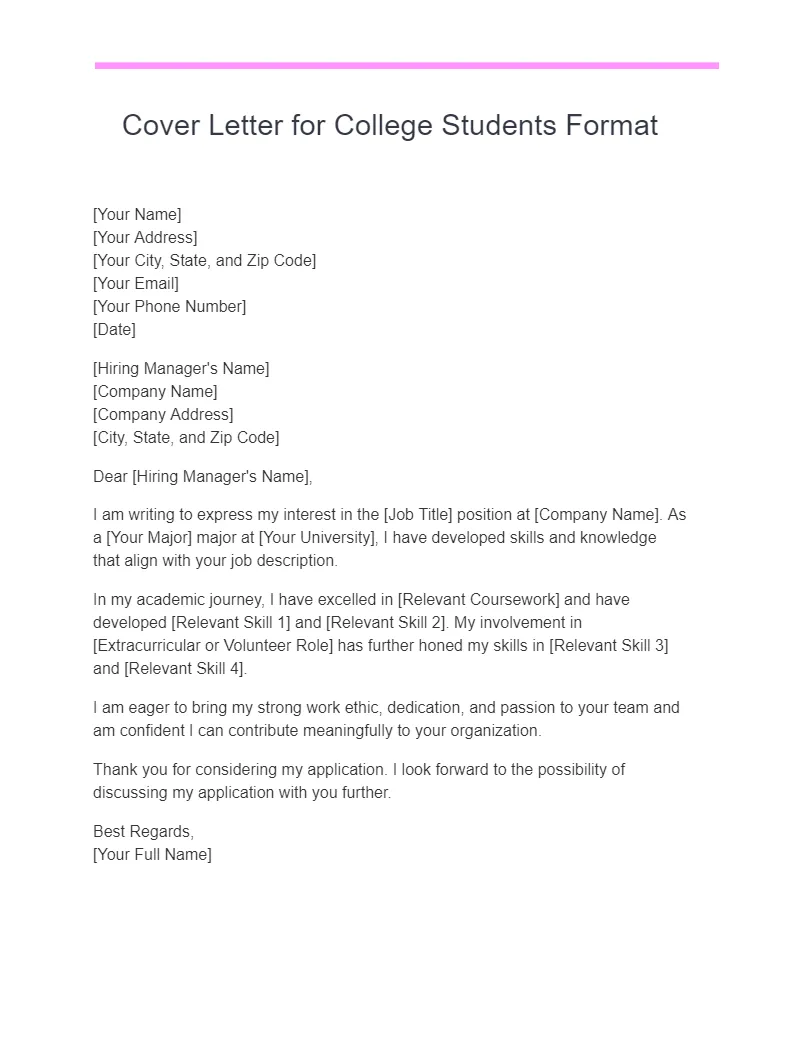
Tailor your cover letter to each job application. Review the job description carefully and identify the key skills and qualifications the employer is seeking. Then, in your cover letter, highlight the skills and experiences that match those requirements. Use keywords from the job description throughout your letter. This shows the employer that you have taken the time to understand the role and what the company is looking for. This level of detail is very effective at getting employers’ attention.
Showcasing Relevant Skills
Identify and showcase the skills that are most relevant to the job. Focus on both hard and soft skills. Hard skills are technical abilities, while soft skills are interpersonal and communication skills. Provide specific examples of how you have used these skills in the past. For instance, if the job requires project management skills, describe a project where you successfully managed tasks, deadlines, and team members. If teamwork is important, give an example of successful collaboration. This approach demonstrates your skills and provides proof of your abilities.
Quantifying Your Achievements
Whenever possible, quantify your achievements to make your claims more impactful. Use numbers, statistics, and data to demonstrate the results of your actions. For example, instead of saying ‘Improved customer service,’ say ‘Increased customer satisfaction scores by 15% through implementing new training programs.’ Quantifying your achievements makes your claims more concrete and shows the tangible benefits you can bring to the company. Use metrics to show employers the value you can offer.
Addressing the Employer’s Needs
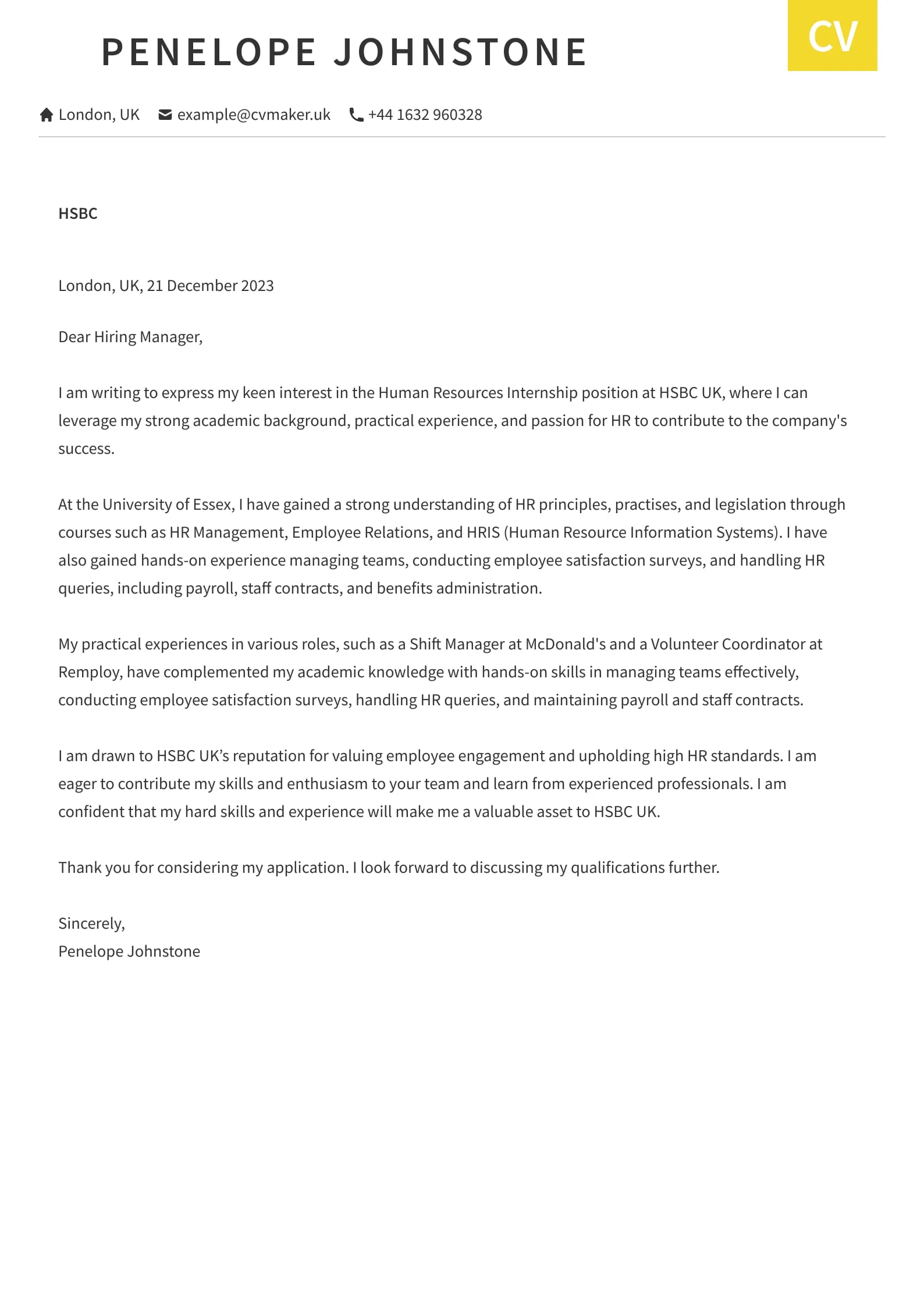
Show that you understand the employer’s needs and how you can help solve their problems. Research the company to identify its goals, values, and challenges. Explain how your skills and experiences align with these aspects. Demonstrate that you understand the company’s mission and can contribute to its success. By addressing their needs, you show the employer that you are thinking beyond the role and are invested in their overall success. Connect your skills and experiences to the company’s values and objectives.
Concluding Your Cover Letter
The conclusion of your cover letter is crucial. It’s where you summarize your key qualifications and reiterate your interest in the position. A strong conclusion leaves a lasting positive impression. The closing paragraph should be concise, clear, and professional. End with a call to action to encourage the employer to contact you for an interview.
Expressing Gratitude
Begin your closing paragraph by expressing gratitude for the employer’s time and consideration. Thank them for reviewing your application and acknowledge their efforts. A simple ‘Thank you for your time and consideration’ shows professionalism and respect. This positive tone leaves a good impression and makes you appear polite and appreciative of the opportunity.
Call to Action
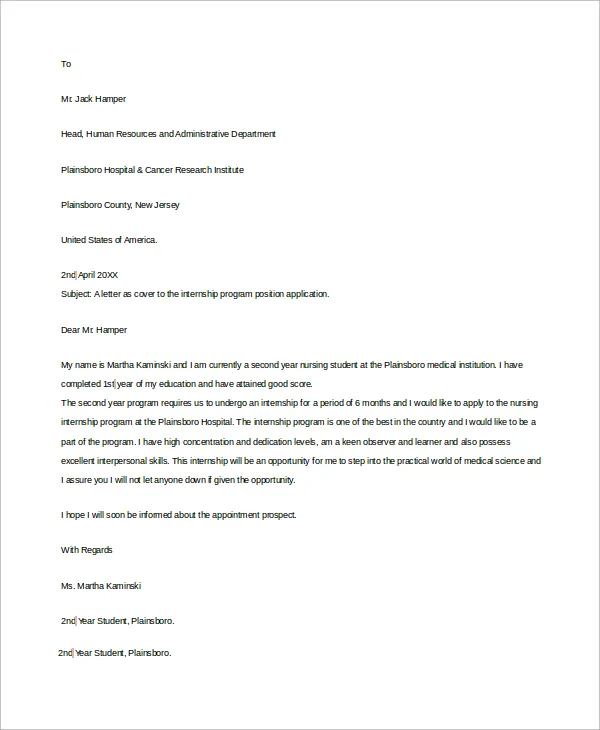
End with a clear call to action, asking for an interview. State your availability for a phone call or meeting. Include your contact information again. This helps the employer know what the next step is and makes it easier for them to reach you. A direct and confident call to action demonstrates your initiative and enthusiasm. For example, you could state, ‘I am available for an interview at your earliest convenience and can be reached at [phone number] or [email address].’
Cover Letter Samples for Different Situations
Different job applications require different approaches. Tailor your cover letter to the specific role and situation. Knowing the right format and content for each application type is critical for success. Whether it’s an entry-level position, an internship, or a part-time job, the approach and content should align with what the employer is looking for. You can find many cover letter samples online to guide you. The most important thing is to adapt them to your specific circumstances.
Entry-Level Job Application
When applying for an entry-level job, emphasize any transferable skills you’ve gained from academic projects, volunteer work, or extracurricular activities. Highlight your enthusiasm for the field and your willingness to learn. Even if you lack direct work experience, focus on how your skills and experiences align with the job requirements. Demonstrate your ability to learn quickly and adapt to new situations. Use examples to show your work ethic and dedication, as well as your ability to work in a team. For the entry-level application, focus on your motivation and eagerness to succeed.
Internship Application
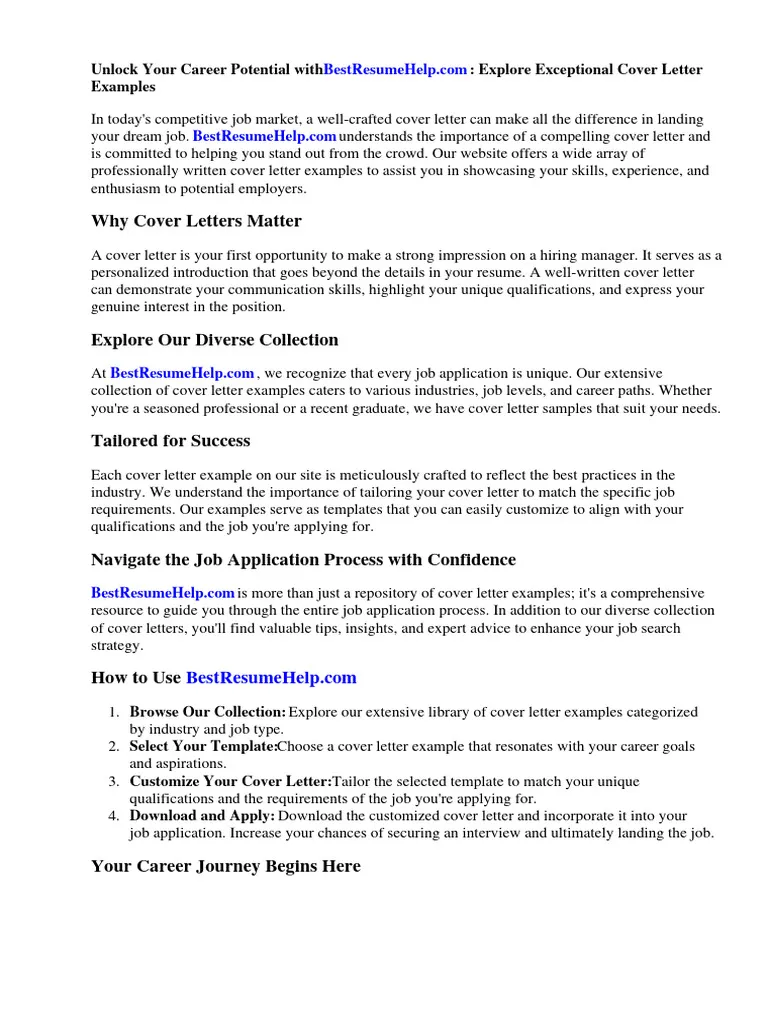
For an internship application, highlight relevant coursework, projects, and any related experience. Explain why you are interested in the internship and what you hope to gain. Show your passion for the industry and the company. Include details about how you can contribute to the company’s goals during the internship. Focus on what you can bring to the table and how you can benefit from the experience. Detail any technical skills and any specific software or tools you know, relevant to the position. In this case, you should be enthusiastic about the learning opportunities that an internship provides.
Part-Time Job Application
When applying for a part-time job, focus on your availability, reliability, and any relevant skills. Explain how the job will fit into your schedule and academic commitments. Highlight your time management and organizational abilities. Emphasize your willingness to contribute to the company’s team, and your attention to detail. If the job involves customer service, show your ability to communicate well and handle difficult situations. For a part-time job, emphasize the aspects of the job description that match your skills and availability, such as how your time aligns with the job schedule.
Formatting and Presentation Tips
Formatting and presentation are essential for making your cover letter easy to read and visually appealing. A well-formatted cover letter demonstrates professionalism and attention to detail. The formatting makes the content accessible and shows you take pride in your work. Ensure your letter is clear, concise, and easy to read. Proper formatting will make your application stand out. A cover letter that is visually appealing can make a big difference in creating a great first impression.
Font Selection
Choose a professional and readable font, such as Times New Roman, Arial, Calibri, or Helvetica. Keep the font size between 10 and 12 points for readability. Avoid using overly fancy or decorative fonts. Maintain consistency throughout your letter. The font choice affects how your letter is perceived. If the font is difficult to read, it might lead to the employer losing interest. A simple, clean font ensures the focus remains on the content of your letter.
Length and Structure
Keep your cover letter concise and to the point. Aim for one page. Use clear paragraphs, and avoid long blocks of text. Use headings and bullet points to organize the content and make it easy to read. Maintain a consistent structure throughout your letter, including an introduction, body, and conclusion. A well-structured letter is easier to understand and shows respect for the reader’s time. Brevity and clarity make a positive impact and prevent the employer from getting bored.
Proofreading and Editing
Proofread your cover letter carefully for any grammatical errors, typos, and inconsistencies. Ask a friend, family member, or career counselor to review your letter for clarity and accuracy. A polished cover letter demonstrates professionalism and attention to detail. Ensure all your contact information is correct. Use a spell-checker, but also read the letter carefully as a spell-checker can miss errors. A well-proofread letter sends a clear message about your attention to detail and professionalism.
Common Mistakes to Avoid
Avoid common mistakes that can undermine your application. Knowing what to avoid can improve your chances of success. Common mistakes can damage your credibility and lessen your chances of getting hired. Paying attention to detail and understanding the key aspects of writing a great cover letter can improve your chances. Avoid mistakes such as grammatical errors, generic content, and failure to tailor your letter to the job.
Grammatical Errors and Typos
Grammatical errors and typos can create a negative impression. Proofread your letter carefully for any mistakes. Use grammar-checking tools, but don’t rely on them entirely. Always reread your letter to catch errors a computer might miss. Mistakes can make you appear unprofessional and can suggest a lack of attention to detail. If you are not a strong writer, consider seeking help from a writing center or a professional editor. Attention to detail in your cover letter speaks volumes about you.
Generic or Unfocused Content
Avoid using a generic or unfocused cover letter that could apply to any job. Tailor each letter to the specific job requirements and company. Customize your letter to demonstrate your genuine interest in the role. Show that you understand the job and the company’s needs. Make the employer feel like the letter was written specifically for their company and role. Generic content shows that you have not invested time or thought into the application, which may be interpreted as a lack of interest in the position.
Not Tailoring to the Job
Failing to tailor your cover letter to the job is a major mistake. Always read the job description carefully and identify the key skills and qualifications the employer is seeking. Highlight the skills and experiences that match those requirements. Use keywords from the job description. Tailoring your cover letter shows the employer that you are serious about the role and have taken the time to understand their needs. It is a crucial element of making a strong first impression.
Resources and Tools for Cover Letter Writing
Numerous resources and tools are available to assist you in writing a strong cover letter. These resources provide guidance, templates, and examples to help you craft an effective letter. These tools provide assistance and can help you with your cover letter and with your job applications in general. Utilize these resources to ensure your letter is of the highest quality. With these tools, you are better positioned to create a great cover letter.
Online Cover Letter Templates
Numerous websites offer free cover letter templates. These templates can save you time and help you create a professional-looking letter. Many of these templates are customizable, allowing you to adapt the content to your specific needs. Look for templates that match the job you’re applying for. Ensure that you personalize the template with your own information and tailor it to the job description. Many options are available, making it easier to create a high-quality cover letter.
Writing Guides and Tutorials
Many online writing guides and tutorials offer advice on writing effective cover letters. These resources provide insights into the structure, content, and formatting of a cover letter. Read articles and guides to learn about best practices and common mistakes to avoid. Watch videos or take online courses that offer detailed guidance and examples. These guides can help you understand the key elements of a cover letter and how to write one that stands out from the crowd. Enhance your skills through this guidance and tutorials.
Professional Review Services
Consider using professional cover letter review services. Many companies offer services to review and edit your cover letter for grammar, clarity, and effectiveness. A professional reviewer can provide feedback on your letter’s structure, content, and overall impact. Their expertise can help you identify and correct any weaknesses. These services can be a valuable investment in your job search. Professional reviews offer an objective assessment of your cover letter.
